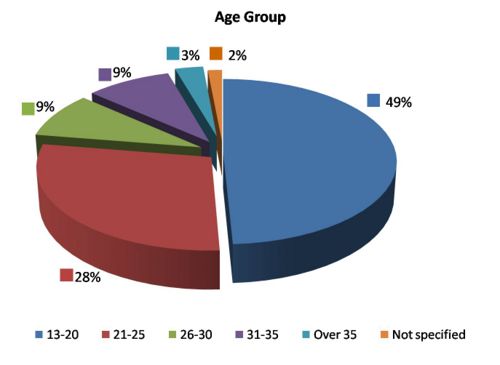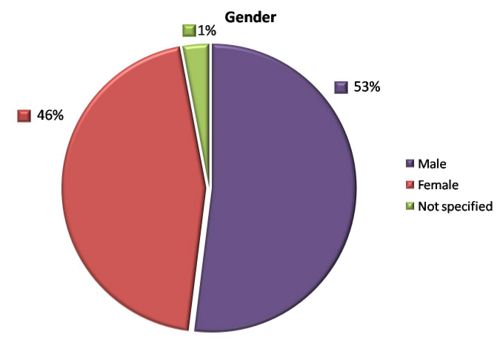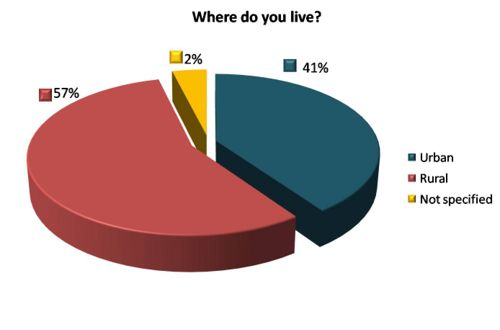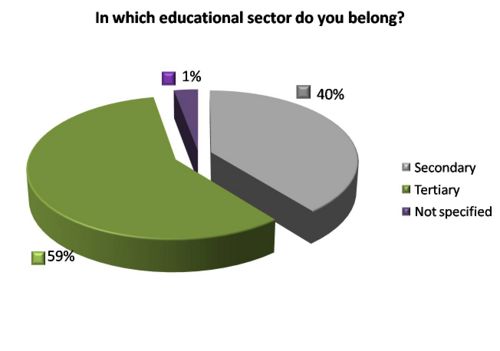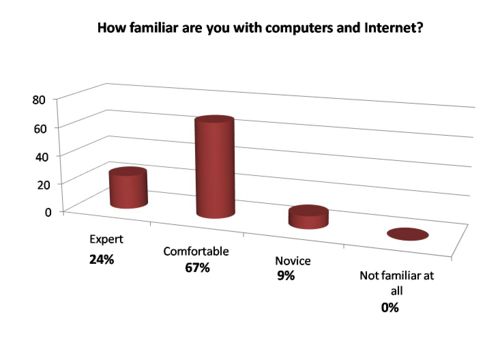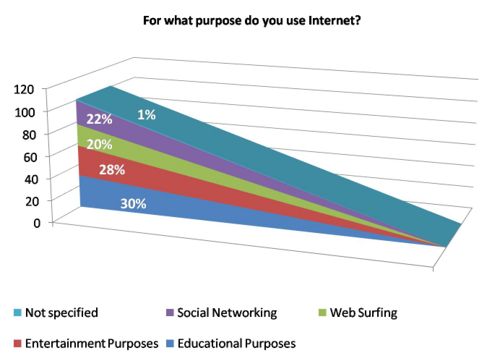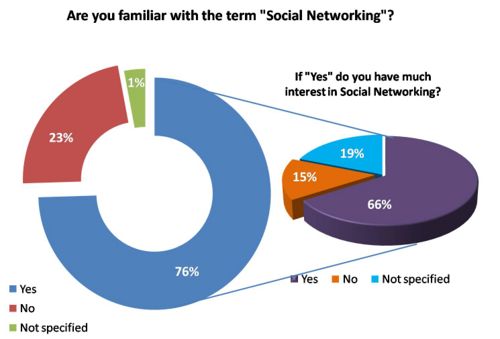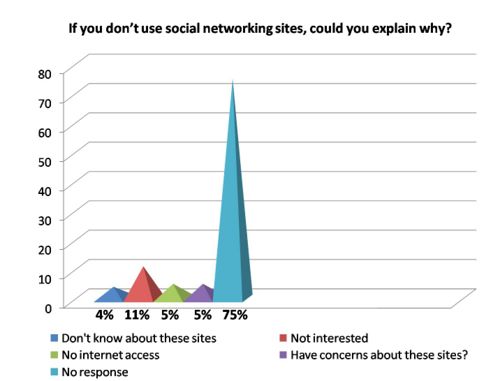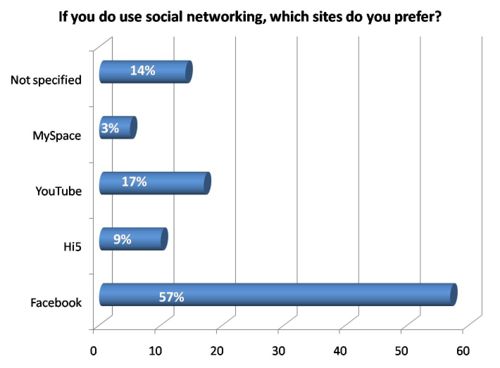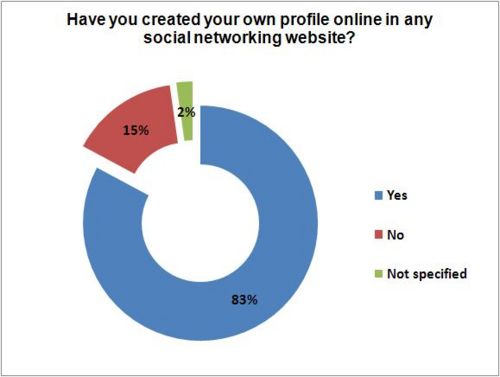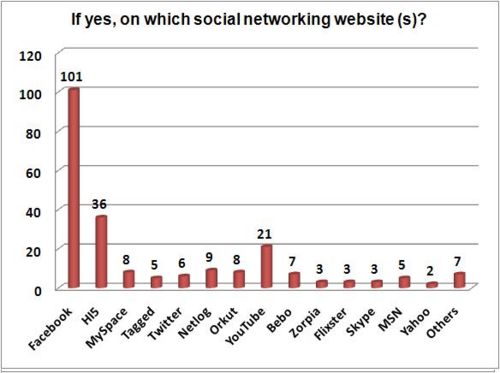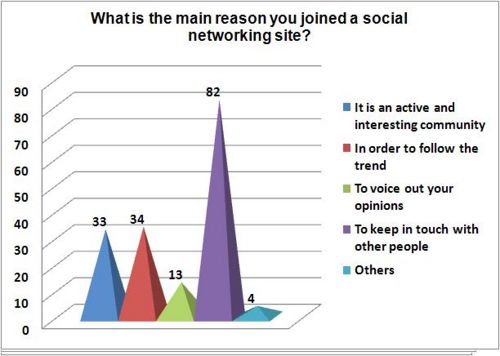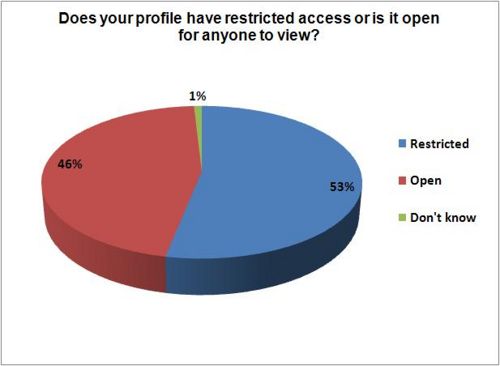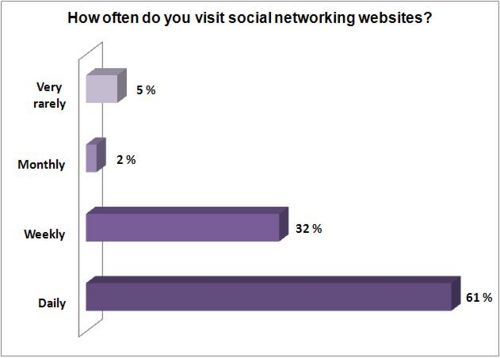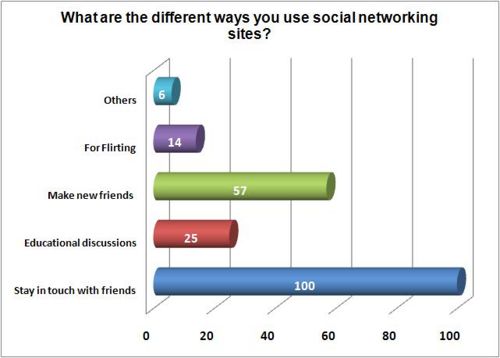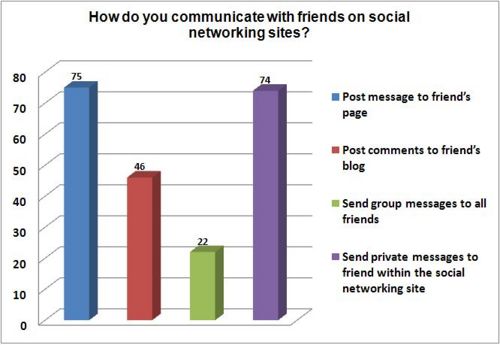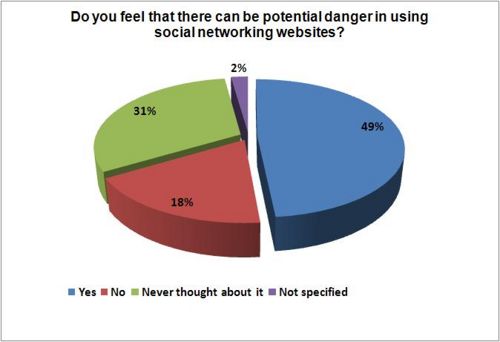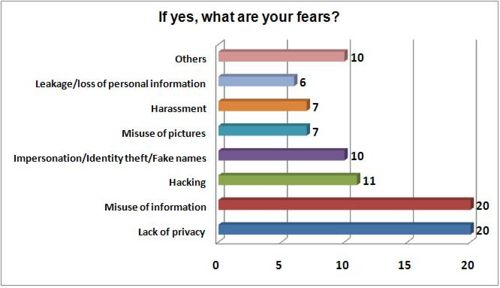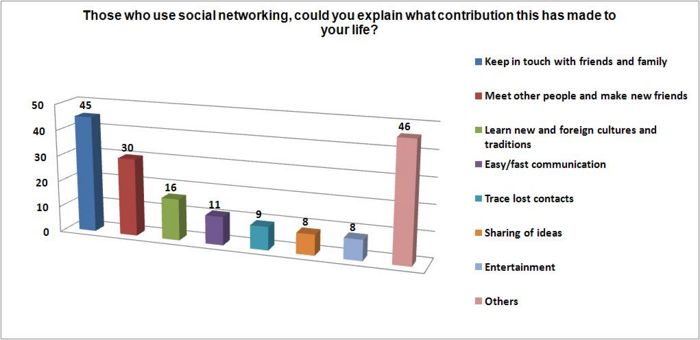SN/Analysis
From WikiEducator
< SN
Contents
AnalysisIn regards to the Questionnaire, the analysis of the respective questions mentioned, have been made here and they are graphically represented. This is mainly to give a proper illustration of our surveys made using quantitative research method. This allows us to measure or to quantify a whole range of things. For instance, the surveys have helped the varied responses to become numbers in the way they are analysed. Hence, this approach helps to enhance and deepen our understanding about different people from a wide range of age groups and their behaviour and thus, compiling these results in statistics and numbers. Age Group
As seen by the above chart, it can be observed that there is a higher % of students in the age group 13-20 which use social networking sites. This is closely followed by a population in the age group 21-25 .
Gender The survey shows that the male population uses social networking sites
more than the female population.
Geographic Region It seems that people living in rural areas use social networking sites
more than those living in urban areas.
Educational Sector Students in the tertiary sector are more familiar and use social networking sites
more than students in the secondary sector as shown by the above figures.
Familiarity with computers and internet Most of the students are comfortable with the internet and its tools as shown by the 67%. A small number are experts and only 9% are novice users. There is no one who is not familiar at all with computers and internet.
Purpose of use Most students use the internet for educational purposes as shown by the 30%.
However, following closely with 28%, is the use of internet for entertainment purposes.
Knowledge and use of Social Networking A large number of students are familiar with the term social networking
and they are very interested in social networking sites.
Reason for not using social networking Although 75% of the student's population did not answer the question of why they did not use social networking sites, the majority of those who did answer stated that they were simply not interested.
Most popular site Facebook seems to be the most popular social networking site leaving the other sites a long way behind.
Profile Most of the student's population has created their own profile on one or many social networking websites. 15% students do not have a profile online and 2% has not specified any.
Social Networking websites Many students have created their profile on more than one website but the most used one remains Facebook. Other popular ones are Hi5 and YouTube. The last item on the chart, i.e., 'Others' consists of the following websites:
Main reason for joining a Social Networking site Many students have specified several answers for this question but most students stated that they joined a social networking website to keep in touch with other people.
Open or restricted acess As shown in the charts above, 53% of the student's profile has retricted access while 46% has open access. Only 1% student don't know whether their profile are restricted or open.
Frequency of visiting Social Networking websites A large number of students visit social networking websites daily with 61%. 32% students visit weekly, 2% visit monthly and the remainder 5% visit very rarely.
Different ways of using Social Networking sites Here again many students have given more than one answer. Most of them use social networking sites to stay in touch with friends. Many also mentioned that they use them to make new friends. Some use it for educational purposes while others use it for less common reasons such as for flirting, out of curiosity or for fun.
Ways of communication Two ways which most students use to communicate with friends on social networking sites are to post message to friend's page and to send private messages to friends within. The least used way is to send group messages to all friends.
Are Social Networking websites dangerous? 49% students think that there can be potential danger in using social networking websites while 18% believe that there is no danger. 31% never gave it a thought.
Potential dangers The most common fears in using social networking websites are lack of privacy, misuse of information, hacking and identity theft. Other less common fears are harassment, misuse of picture and leakage/loss of personal information. Other dangers not shown in the chart are as follows:
Contributions Firstly social networking has enabled students to keep in touch with friends and family. Secondly it has allowed students to make new friends. There are other more contributions that social networking has made as shown in the above diagram. Other contributions not specified are as follows:
|

